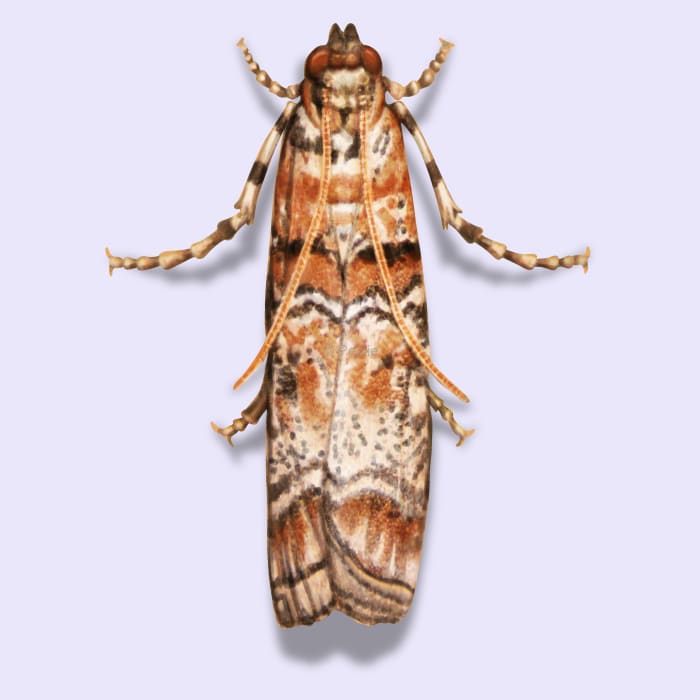How to identify and get rid of pine tip moths

A few tips for managing pine tip moths
Watching your beloved pine trees slowly turn yellow and brown or wilt from caterpillar damage can be frustrating. If you notice copper-colored moths flying around or just the tips of your pine trees going yellow, then there’s a good chance you are dealing with pine tip caterpillars.
Pine tip caterpillars enjoy munching on the new growth of a variety of pine tree species. As the larvae tunnel into the tips of the pine shoots, they cause the shoots to brown and die, which can stunt the tree’s growth and leave your landscape looking less than its best.
The adults come out in spring and lay eggs on pine trees. Once the eggs hatch, the caterpillars bore into the tips of pine branches until summer. Then, they crawl down the side of the trunk and pupate in cocoons in the soil. They overwinter in their cocoons in the soil and then come out again as adults in the spring.
How to identify pine tip moths
Pine tip moths are small, copper-colored moths with dark spots on their wings. While the adult moths are difficult to spot, their larvae cause visible damage to pine trees. The caterpillars, which are creamy white to brown, tunnel into the tips of pine shoots, causing the tips to wilt, brown, and die. You might also notice resin-covered holes at the tip of the shoots and silk webbing, indicating where the larvae have entered. If your pine trees have stunted growth, browning tips, or dying shoots, you likely have a pine tip moth infestation.
How big are pine tip moths?
Adult pine tip moths measure about 1/4 to 1/2 inch in wingspan, while the larvae can grow up to 1/2 inch long.
Where do pine tip moths live?
Pine tip moths are commonly found throughout the United States, especially in regions where pine trees grow, including the southeastern, southwestern, and western states.
Common Locations in Homes/Yards: You’re likely to find pine tip moth infestations in young pine trees, especially in ornamental pines or newly planted pines in landscapes.
How to get rid of pine tip moths
Pine tip moths are a challenging pest, as the adults are hard to spot, and once they’ve laid their eggs, you won’t know there is a problem until you see the pine tips changing colors.
If you do see these tell-tale signs, here are a few things you can do to battle against these pests:
- Prune infested shoots: Remove and destroy any affected pine shoots that show signs of wilting or browning to eliminate larvae before they spread.
- Maintain tree health: Keep your pine trees healthy by watering them properly and providing appropriate nutrients. Healthy trees are better able to withstand infestations.
- Plant pest-resistant pines: While this won’t fix your problem with your current pine trees, if you plan on planting more pines, consider those that aren’t susceptible to pine tip moths.
Treat pine tip moths with Pestie
If you're still having trouble keeping pine tip moths away, the best option is to use a pro-grade, effective pest control solution like Pestie.
Pestie is a do-it-yourself pest control solution that's specially designed to keep pine tip moths and other pests away from your home.
With Pestie, you can rest easy knowing that your living space is protected and free of creepy crawlies. And the best part? It's designed for people, pets, and the planet, so you can say goodbye to harsh chemicals and hello to peace of mind!
- Save hundreds compared to traditional annual pest plans
- People, pet, and planet-friendly
- Pro-grade customized formulas
Quick facts
- Scientific name
Family - Tortricidae
- Colors
Coppery-brown
- Life span
1 year
- Diet
Young pine tips
How dangerous are Pine Tip Moths?
Low danger risk
Pine tip moths won’t harm people or pets but will damage pine trees if not managed early.
A tiny parasitic wasp called Trichogramma can lay its eggs inside the pine tip caterpillar, hatch inside the caterpillar, and eat the caterpillar’s inside before emerging as an adult.








